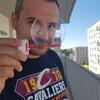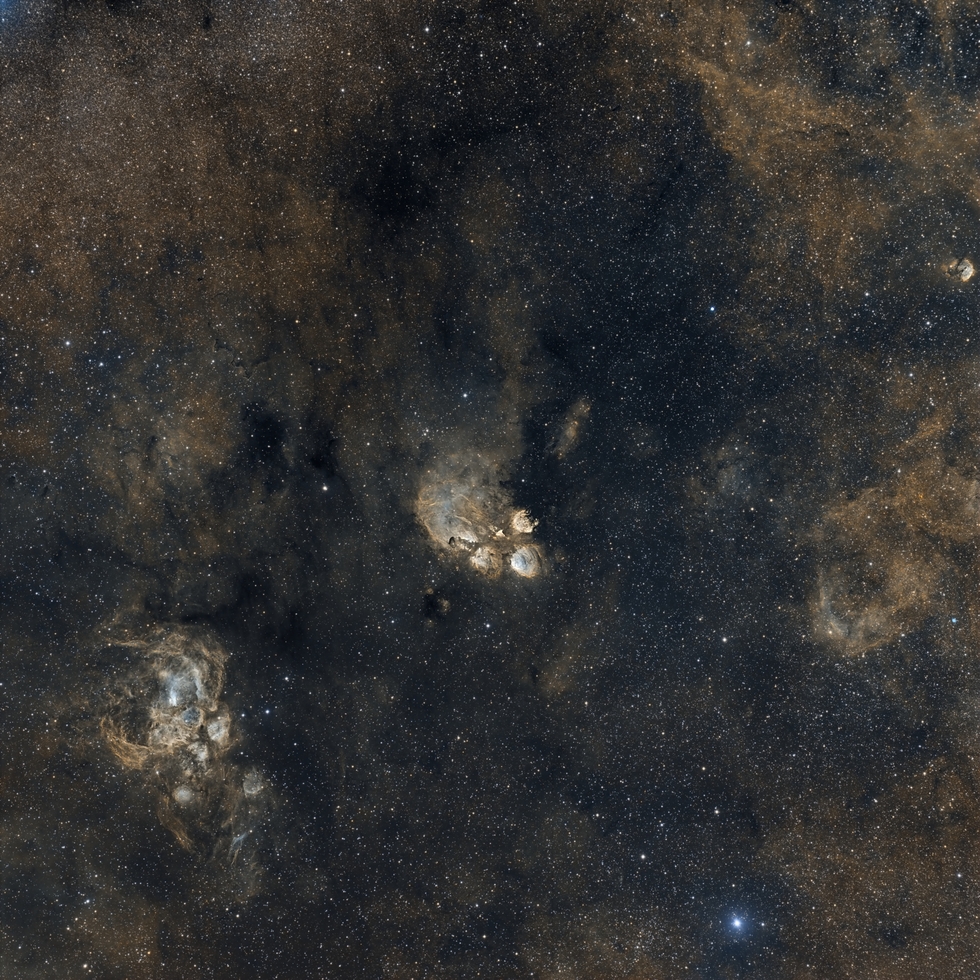Lobster, the Cat's Paw and the Big "S"
Lobster, the Cat's Paw and the Big "S"
Close to the tail of the celestial Scorpion there is a vast area rich in nebulae, clusters and dark dust that decorates the busy belt of the Milky Way.
To the left of the picture, we find the emission nebula NGC 6357, that has many popular names – Lobster, War and Peace or Madokami. In the infrared domain, the nebula looks like a combination between a dove and a skull, giving its antagonistic name War and Peace. The nebula is 5.500 light-years away and has an open cluster embedded, Pismis 24, made of supermassive stars. One of them even has a mass higher than 300 Suns. Two other young clusters are hidden in the nebula – G353.3+0.7 and G353.1+0.6.
In the middle we can see the well-known emission nebula NGC 6334, named Cat’s Paw. It was discovered in 1837, when John Herschel observed it from South Africa. It is 320 light-years wide and is rich in star forming regions. Towards the back of the “paw” there’s a very faint open cluster, Bochum 13.
To the right of the picture,another emission nebula shows up, the “S” shaped RCW 120, located 4.300 light-years from the Sun. It has the shape of a 10 light-years wide bubble which constitutes the birthplace of many stars – in pictures made at different wavelengths (visible, infrared, ultraviolet) we can see many gas clumps which collapse under their own weight, creating protostars much heavier than the Sun. The biggest protostar detected so far is already 10 times heavier than the Sun and it’s still growing through the gas accretion process. RCW 120 is ionized by CGO 439, a hyperluminous O8V type star which is located in the bottom part of the nebula.
To the left of the picture, we find the emission nebula NGC 6357, that has many popular names – Lobster, War and Peace or Madokami. In the infrared domain, the nebula looks like a combination between a dove and a skull, giving its antagonistic name War and Peace. The nebula is 5.500 light-years away and has an open cluster embedded, Pismis 24, made of supermassive stars. One of them even has a mass higher than 300 Suns. Two other young clusters are hidden in the nebula – G353.3+0.7 and G353.1+0.6.
In the middle we can see the well-known emission nebula NGC 6334, named Cat’s Paw. It was discovered in 1837, when John Herschel observed it from South Africa. It is 320 light-years wide and is rich in star forming regions. Towards the back of the “paw” there’s a very faint open cluster, Bochum 13.
To the right of the picture,another emission nebula shows up, the “S” shaped RCW 120, located 4.300 light-years from the Sun. It has the shape of a 10 light-years wide bubble which constitutes the birthplace of many stars – in pictures made at different wavelengths (visible, infrared, ultraviolet) we can see many gas clumps which collapse under their own weight, creating protostars much heavier than the Sun. The biggest protostar detected so far is already 10 times heavier than the Sun and it’s still growing through the gas accretion process. RCW 120 is ionized by CGO 439, a hyperluminous O8V type star which is located in the bottom part of the nebula.
SPECIFICATIONS
Telescope
Takahashi FSQ-106ED f/3,6
Camera
FLI PL16803
Location
Heaven's Mirror Observatory - Australia
Date of observation
Dec 2024
Filters
SHO
Processing
PixInsight



